 Your new post is loading...
 Your new post is loading...

|
Scooped by
Jeff Domansky
November 14, 2016 11:08 AM
|
Since Tuesday’s election, there’s been a lot of finger pointing, and many of those fingers are pointing at Facebook, arguing that their newsfeed algorithms played a major role in spreading misinformation and magnifying polarization. Some of the articles are thoughtful in their criticism, others thoughtful in their defense of Facebook, while others are full of the very misinformation and polarization that they hope will get them to the top of everyone’s newsfeed. But all of them seem to me to make a fundamental error in how they are thinking about media in the age of algorithms. Consider Jessica Lessin’s argument in The Information: "I am deeply, deeply worried about the calls I am hearing, from journalists and friends, for Facebook to intervene and accept responsibility for ensuring citizens are well-informed and getting a balanced perspective…. Facebook promoting trustworthiness sounds great. Who isn’t in favor of accepting responsibility and ferreting out misinformation? But major moves on Facebook’s part to mediate good information from bad information would put the company in the impossible position of having to determine “truth,” which seems far more objective than it really is. Moreover, it would be bad for society.” My response: Facebook crossed this river long ago. Once they got into the business of curating the newsfeed rather than simply treating it as a timeline, they put themselves in the position of mediating what people are going to see. They became a gatekeeper and a guide. This is not an impossible position. It’s their job. So they’d better make a priority of being good at it....

|
Scooped by
Jeff Domansky
October 27, 2016 11:58 AM
|
For years, CNN’s news brand has been synonymous with its hosts and anchors. Yet as it’s set up beachheads on the platforms where more and more people consume news, it’s had to leave its broadcast stars on the sidelines: You can get CNN news on Facebook and Snapchat and Twitter, but you won’t get Anderson Cooper or Fareed Zakaria or Erin Burnett. A week before Election Day, that’s going to change, when it unveils a skill for the Amazon Echo that will give listeners near real-time updates sourced directly from CNN’s broadcast and its anchors (Skills are Amazon’s name for capabilities that third parties like CNN develop for Echo). It’s part of a broader push to optimize CNN’s content for quicker, more efficient distribution across the channels. “We put a lot of work into ensuring our audience hears our talents’ voices,” said Alex Wellen, CNN’s chief product officer, adding that he wanted the experience of using the new Amazon skill to feel “more chat than bot.”...

|
Scooped by
Jeff Domansky
September 19, 2016 10:14 AM
|
A picture shows something. A photo tells a story. Anyone can put a camera to their face and press the button. It’s called taking a picture. The ability to transform a picture into something interesting – a photo – is a skill. It’s estimated that about four billion people will have the ability to put a smartphone camera to their face in 2017. One conservative estimate puts the number of images that will be taken at 1.2 trillion. Should all four billion of us average 10 photos a day, that number exceeds 14 trillion. News is driven by imagery and, while the use of video online is ever-increasing, photography will always have its place. Unlike days of old (which aren’t all that long ago), where photos were by and large taken by news photographers, photography is now everyone’s domain. Using the U.S. as a guide, just over 50,000 professional photographers were registered in 2015. The number of smartphones in the US in 2016 is expected to be just over 200 million. Allowing for some variance, the smartphone user to photographer ratio sits at about 4,000:1....

|
Scooped by
Jeff Domansky
June 13, 2016 11:07 AM
|
A new report from Pew Research Center shows an increase in the number of people in the United States getting their news from social media platforms. The report revealed that more than 62 percent said they get news on social media, which is about a 13 percent increase since 2012.OK, what else is new? Facebook is becoming more like Twitter as a news source.That might be your reaction to what is already a clear trend of people turning to social media for their news. But what does that mean for media outlets? We dig into the numbers here to translate them into actionable insights....

|
Scooped by
Jeff Domansky
March 6, 2016 4:03 PM
|
Pouring gas on the bonfire of news tech, Google recently announced that it has distributed more than €27 million ($30 million) into projects spanning the European news tech scene.
The fund’s goal is to ‘help stimulate innovation in digital journalism’ over the next three years, Google’s CEO Sundar Pichai said at an event in Paris last week. This batch of project endowments is the first from a €150 million ($167 million) fund the company announced last year.
“The funding will go to a wide variety of organizations”, Pichai said, describing the companies applying for the Digital News Initiative (DNI) funds as “wonderfully diverse, ranging from automated content personalization and robot journalism, to hoax-busting apps and tools to verify social media in real-time reporting....

|
Scooped by
Jeff Domansky
November 1, 2015 1:04 AM
|
Business Wire’s 2015 Media Survey is now available and it offers startling results about how journalists see the future of news media. The landscape of media is changing – new platforms and new styles. The New York Times is an institution but it didn’t start off as one. How will we be referring to BuzzFeed decades from now? Will the two seemingly different lines of media style intersect at some point in the future? These questions are part of the debate regarding the future of media and journalists are split.
According to an article published in The Guardian back in 2013, BuzzFeed is described as an, “irreverent US news and entertainment website taking the social web by storm” and investor Kazz Lazerow, co-founder of Buddy Media, described the website as “the defining media company for the social age.”
Only a few years ago, BuzzFeed represented the wave of change the digital age brought upon news media and that wave has only continued to grow. Now, BuzzFeed is challenging traditional forms of news, jockeying to become the standard of journalism.
When asked to decide between The New York Times style and the BuzzFeed style, journalists made clear that while the classical form isn’t going anywhere, it will have to share its place at the top....

|
Scooped by
Jeff Domansky
August 21, 2015 5:30 PM
|
On Monday, The New York Times ran something of a rant in the business section about the impact of social media on quality journalism, with writer Ravi Somaiya saying in part: “[a]s more readers move toward online social networks, and as publishers desperately seek scale to bring in revenue, many [newspapers] have deplored a race toward repetitive, trivial journalism, so noisy that it drowns out more considered work."
Joshua Topolsky, a founder of The Verge, added this means that the news industry “must churn out stories that are the equivalent of blockbuster superhero franchises, with mass-audience appeal, but light on nuance and creative risk,” according to Somaiya. "I think that we have, in trying to attack the totality of possible eyeballs on the Internet, lost the things that make publications great,” Topolsky added....

|
Scooped by
Jeff Domansky
November 7, 2014 12:19 PM
|
The growth of social media has changed the way news organisations cover conflicts around the world, but traditional journalistic values are still vital.
These, at least, were the main conclusions from a panel at the Web Summit conference in Dublin this morning, featuring representatives from Time, Vice News and News Corporation-owned social curation service Storyful.
“I’m not sure that the task of journalism has changed that much: we still send journalists to unearth stories and break news. But Twitter is our competition, and we have faced up to that reality,” said Matt McAllester, Europe editor for Time....

|
Scooped by
Jeff Domansky
September 18, 2014 10:46 AM
|
Student editor's response: "I’m so scared and excited I could pee my pants."
Medium now has Substance. The popular publishing platform recently started hosting Substance, a new student publication at Mt. San Antonio College that doubles as a totally reinvented version of The Mountaineer campus newspaper.
It is the first college media outlet to operate primarily on Medium. Substance adviser and MSAC j-prof extraordinaire Toni Albertson describes the arrangement as nothing less than “the perfect merge of tech and college journalism.”
In a bravura announcement yesterday about the merger, Albertson explained that the impetus behind it was two-fold — mounting staff frustration at the print production routine and growing reader ennui toward the print edition....

|
Scooped by
Jeff Domansky
September 6, 2014 12:43 PM
|
Call it the newspaper network wars.
The Washington Post’s Newspaper Partner Program has grown from a March-planted seedling into a full-grown fall oak. The initiative now includes more than 120 daily newspapers in the U.S., and could connect with more than 200,000 digital newspaper subscribers or more by the middle of next year. Meanwhile, The New York Times is newly working with newspaper partners, launching its own products. USA Today, too, is now pitching a news partner program across the country.
What’s going on here? Why in 2014 are we seeing both new digital and print partner programs being offered up by three of America’s national newspaper brands? We can chalk it up to two things. Most prominently, the Jeff Bezos era at the Washington Post is fully taking hold. Secondly, publishers —these national ones and the early-adopting regional ones — are getting smarter at working around the edges, figuring out how to add on the smaller things that readers will pay for in this renewed age of reader revenue....

|
Scooped by
Jeff Domansky
May 19, 2014 11:07 PM
|
Most of what we call news is filler. The practice of filling space and time — stuffing “content” into a “news hole” — is a relic of an era when printing and broadcast space and time were limited, privately held, and paid for mostly by advertising, which requires ears and eyeballs showing up predictably and in fixed places.
The Internet obsoleted all of it, including the frame of news as filler.
The river is a good metaphor for what news is, and should be. Sometimes it’s a trickle, sometimes a flood. But it always flows....

|
Scooped by
Jeff Domansky
March 16, 2014 11:22 PM
|
Last July, The Washington Post launched a live video channel that its president proclaimed would be “the ESPN of politics.” Instead, PostTV turned out to be more like a public access show. Within five months, the live content had vanished and the “channel” became little more than a clearinghouse for pre-taped video packages and recycled press briefing footage, along with the occasional original report.
What the Post learned in its video flop in 2013 is what The New York Times, The Wall Street Journal, POLITICO and other large news organizations had discovered in years prior: Creating quality live television is expensive — the Post invested millions of dollars and dozens of staffers to Post TV — and much harder than it looks. The end result didn’t interest readers — or advertisers....

|
Scooped by
Jeff Domansky
March 6, 2014 2:32 AM
|
The Guardian had another big year of digital business last year, further brightening the paper’s long-term outlook. The paper says its digital revenue will hit $117 million in its current fiscal year, which ends on March 31. That’s up a quarter from $92 million the year before. That’s an excellent performance. Even better, the paper says its overall revenue, including print, will be up more than 5 percent from last year, which would put it at about $345 million. In the newspaper world, that’s what counts as torrid growth. It helps that print, which still accounts for two-thirds of Guardian revenue, was down less than 4 percent, according to my estimates....
|

|
Scooped by
Jeff Domansky
October 28, 2016 12:40 AM
|
Try to imagine getting the latest news by chatbot? If you can think it, you can ask for breaking news from CNN using Amazon Echo. That’s right. It’s the latest news brought to you by CNN chatbot. CNN launches chatbot news CNN has done a great job of delivering the news on TV and new social media channels. In fact, it has a 40-person dedicated digital team ready to deliver chatbot news according to a Lost Remote post by Max Willens:...

|
Scooped by
Jeff Domansky
October 7, 2016 11:41 AM
|
Digital publishers may be pouring time and energy into cranking up their video operations, but for a lot of their potential viewers, text is still the way to go. New data from Pew Research finds that, when it comes to the news, younger adults still prefer words over moving images. While 46 percent of Americans overall say they prefer to watch the news over reading it, that number is far lower for Americans between the ages of 18 and 29 — only 38 percent of that group named video as their preferred news consumption format. In contrast, 42 percent said that they actually prefer text (which they prefer to read online, of course). Just 19 percent of young adults named listening as their preference. (“Smelling the news” was not an option.) Those preferences put young people at odds with those between 50 and 64 and those over 65, of which 52 percent and 58 percent, respectively, said they prefer to watch the news. Less than thirty percent of people in both those age groups said the same for text.These generational gaps in news consumption preferences join similar findings from back in July, when Pew reported that 54 percent of 18- to 29-year-olds said that they prefer to get their news online — significantly higher than, say, the 38 percent of those ages 30 to 49, or the 15 percent of those ages 50 to 64 who said the same....

|
Scooped by
Jeff Domansky
September 8, 2016 10:58 AM
|
The Washington Post is enjoying a “remarkable” revenue picture, the paper said in a leaked memo. The Post’s financial picture has been shrouded in secrecy since Amazon founder Jeff Bezos took it private three years ago. So when figures do slip out, they often don’t tell the whole story. Still, they’re interesting because the Post is a rare legacy media outlet that, with Bezos’ deep pockets and patience, would seem to have the best shot at creating a sustainable online news model. Now an internal memo got out that sheds a little more light on that financial picture. Yesterday’s memo, from Post chief revenue officer Jed Hartman, painted a rosy picture, saying, “We are a growing business.” The Post wouldn’t elaborate on the memo. Hartman wrote that the Post’s annual digital ad revenue is a “nine-figure” business, which stands in contrast to the $60 million that New York magazine estimated in a recent profile. He wrote that total ad revenue is up year over year, led by a 48 percent increase in digital sales through August. Within digital, Hartman wrote that the biggest increase is in native advertising, up 275 percent; followed by programmatic, up 92 percent; and video, up 82 percent....

|
Scooped by
Jeff Domansky
May 28, 2016 11:53 AM
|
No need to seek out the news. Today, we can just click around on cat videos and find it by accident. A poll released Thursday by the Pew Research Center found that a majority of Americans (62%) now get news from social media. That includes 66% of Facebook FB -0.10% users — a big deal because more than two-thirds of Americans are on Facebook. The math works out to about 44% of all Americans getting news from Facebook. It’s a number that could scare users angered by the recent censorship controversy. In early May, a staffer accused Facebook of preventing conservative stories from appearing in the small Trending Topics section that appears to the right of the main News Feed column. Facebook has denied it has a bias, but that hasn’t stopped the conservative backlash. Liberals, too, have complained about the power that Facebook has over the news media. Well, it turns out that that social media does have a lot of influence when it comes to how people get their news. It’s not just Facebook. On Reddit and Twitter TWTR +5.59%, 70% and 59% of users, respectively, say they use their networks to find news....

|
Scooped by
Jeff Domansky
January 8, 2016 11:50 PM
|
How can we set the table for 2016?
Advertising woes continue — deepen, actually. Whole new forms of storytelling open up and go mainstream more quickly. Virtual reality joins the harsher realities. Hundreds of millions in new investment develops alongside an equally strong belief that legacy media decline can be managed profitably.
The business of news remains a business like no other. On the other end of all the business machinations, fascinating as they can be, are the readers. They are veteran and young, mobile and stay-at-home, all trying to make sense of a wider world in paroxysms of change. It is their news diet — one that has consequences, especially in election years like 2016 in the U.S. — that matters most.
Let’s use that metaphor to start the year and preview what’s on the menu for the business of news in 2016....

|
Scooped by
Jeff Domansky
August 22, 2015 9:49 PM
|
In July, I shared preliminary results of a study on how readers perceive and learn from online news stories. The upshot: Better-designed stories are better for readers.
As Paul Bolls and I began to design our study, I conducted phone interviews with more than a dozen editors and designers. I asked them how they think about making their work memorable and comprehensible, and how they tested what worked best. Their responses share a few broad themes.
First, digital design is not as evolved as print design. The print newspaper offers the ability to communicate hierarchies of salience and context, all of which the standard Web article template lacks.
Second, for many of them, Web analytics do not play a major role in their day-to-day decision-making. Page views and other metrics are tracked, but beyond limited A/B testing — picking winners based on traffic — analytics do not guide major editorial decisions.
Third, while they seek to make stories and infographics as understandable as possible, memorability is not a major focus. It cannot be measured, and so it generally is not considered....

|
Scooped by
Jeff Domansky
January 31, 2015 8:22 PM
|
Minutes after Apple released its record-breaking quarterly earnings this week, the Associated Press published (by way of CNBC, Yahoo, and others) "Apple tops Street 1Q forecasts." It's a story without a byline, or rather, without a human byline — a financial story written and published by an automated system well-versed in the AP Style Guide. The AP implemented the system six months ago and now publishes 3,000 such stories every quarter — and that number is poised to grow.
Quarterly earnings are a necessity for business reporting — and it can be both monotonous and stressful, demanding a combination of accuracy and speed. That's one of the reasons why last summer the AP partnered with Automated Insights to begin automating quarterly earnings reports using their Wordsmith platform.
You wouldn't necessarily know it at first blush. Sure, maybe reading it in the context of this story it's apparent, but otherwise it feels like a pretty standard, if a tad dry, AP news item. The obvious tell doesn't come until the end of an article: "This story was generated by Automated Insights." According to AI's public relations manager James Kotecki, the Wordsmith platform generates millions of articles per week; other partners include Allstate, Comcast, and Yahoo, whose fantasy football reports are automated. Kotecki estimates the company's system can produce 2,000 articles per second if need be....

|
Scooped by
Jeff Domansky
September 28, 2014 5:09 PM
|
Journalism + Design, the latest program at the The New School in New York City is teaching journalists how to think like designers, and designers how to think like journalists. With a curriculum co-developed by Ideo, the undergraduate program kicked off this semester teaching students how to harness design and design thinking in news.
This interdisciplinary collaboration between Parsons, the New School’s design college, and the liberal-arts-focused Eugene Lang College, will be the first-ever undergrad journalism program at the New School. “The idea was to combine the rigorous critical thinking of a great liberal arts college with the creative design thinking of a great design school,” Program Director Heather Chaplin tells Co.Design. The experimental new program was funded in part by a $250,000 grant from the Knight Foundation, which funds innovation in journalism.
The program--which the creators refer to as being in beta--launched with six classes on topics like “Visualizing Data,” though for the time being, students can also take applicable classes, like web design, at Parsons or at Eugene Lang. In addition to regular faculty, guest editors and designers participate in classes, and each semester more informal “pop-up classes” will taught by working journalists like John Keefe, a data news editor at WNYC who’s teaching a class--in the style of a cooking show--on how to make maps....

|
Scooped by
Jeff Domansky
September 10, 2014 10:08 AM
|
A few months ago, noted investor Marc Andreessen proclaimed his bullish-ness about the state of the news industry, predicting it would grow 100 times. It was a nervy claim to make, in a time when snackable content is all the rage and virality is the most coveted status in media.
So no one was surprised when he personally funded some of that growth; his venture firm Andreessen Horowitz was the sole investor in BuzzFeed’s stunning $50 million round announced last month. The news got the media and tech worlds buzzing (sorry) once again about what constitutes journalism in the digital age and how to best serve audiences growing consistently hungrier for content.As a sixth-generation journalist and one who has studied, written, and worked in many forms of journalism, I was particularly fond of Andreessen’s prediction — and that he followed it up by putting his money where his mouth is.
I’d argue though that the smartest bets in media are going to be companies that fulfill the best values of traditional journalism through the means and necessities of the new digital landscape. The biggest winners will be those who combine old-school news-gathering methods with the distribution technology that makes sites like BuzzFeed such powerhouses....

|
Scooped by
Jeff Domansky
May 28, 2014 4:24 PM
|
The New York Times Innovation Report has been ripped to pieces by many brains in the media world but the issues are the familiar TBD framework I work with, namely Technology (can/does it do what is needed?), Behaviour (will people do what we need/want?) and Data (will enough people do what we need?).
After ploughing through it, despite a slightly depressing overtone, I am confident the New York Times will pull through…the industry can’t afford it not to (read: have an R&D budget). The very fact it is doing a report of this sort (especially considering who asked for it) means they are focusing and clear about their future problems – success therefore is predicated on hard decisions being made about some very core issues (staff etc).
A few things stood out when I read the report...

|
Scooped by
Jeff Domansky
March 29, 2014 3:32 PM
|
There are those who proclaim the rise of digital media is finally giving way to a “golden age of journalism.” And then there are the pessimists who see little but doom or gloom.
And, to be fair, there’s ample evidence for each view. Just check out the Pew Research Center’s 11th annual State of the News Media report that’s being issued today. This year’s study goes in-depth into the revenue picture for news, the rise of digital reporting and growth of digital video. In many ways, this is the best of times and the worst of times for the industry.
You can read the full report at the Pew website or check out a few handy charts here. Meanwhile here’s the speed-read version....

|
Scooped by
Jeff Domansky
March 11, 2014 2:31 AM
|
The future of news might be difficult to predict, but by looking at successful consumer apps and the broader news industry, we can start to develop a picture of what a truly next-generation news industry could look like.
Despite the recent flurry of activity like Jeff Bezos buying the Washington Post and investing in Business Insider, Pierre Omidyar starting First Look, Flipboard’s acquisition of Zite, and new products like Facebook Paper and Yahoo News Digest, fundamental questions remain about the future of news: 1. How will news products grow and retain large 7-day-a-week customer bases? 2. How will news products make money? 3. How will news products address the content discovery problem? 4. What’s the demarcation between the future of publishers and next-gen news product companies?
If we examine what’s working in consumer products and news more broadly, we can make educated guesses about some of these questions and get a sense of where the future of news is headed....
|



 Your new post is loading...
Your new post is loading...



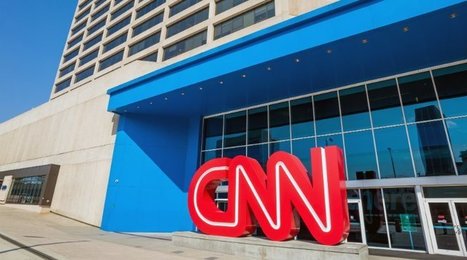

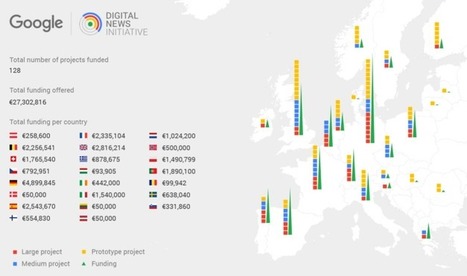
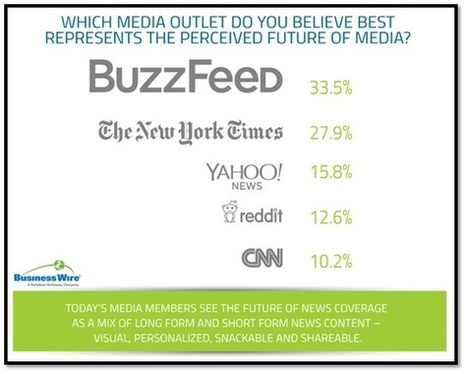








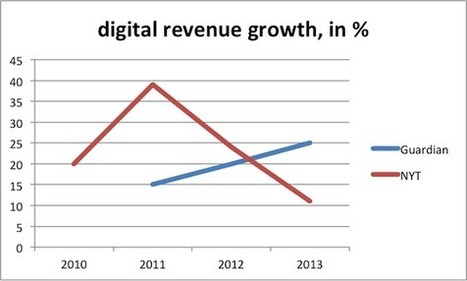
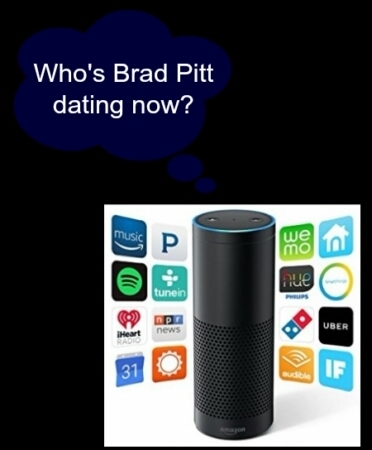



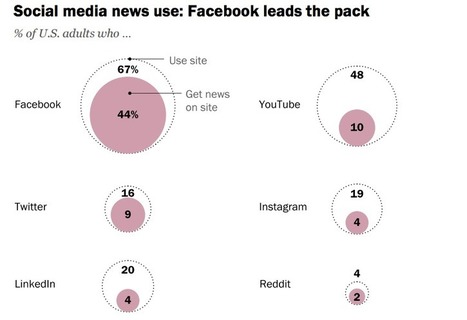



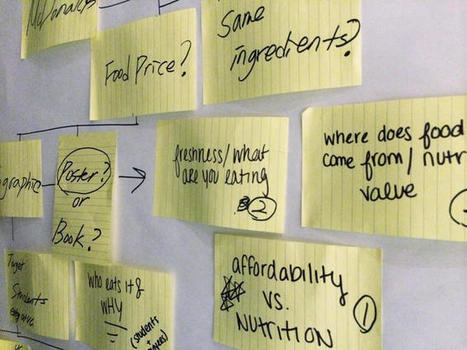
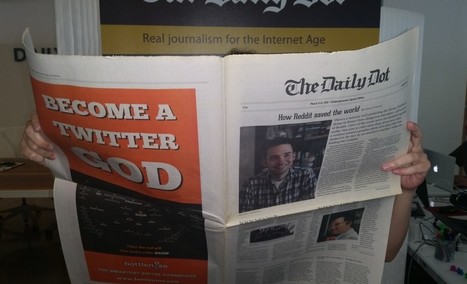







In a compelling argument, Tim O'Reilly says Facebook is obliged to maintain editorial oversight of content.